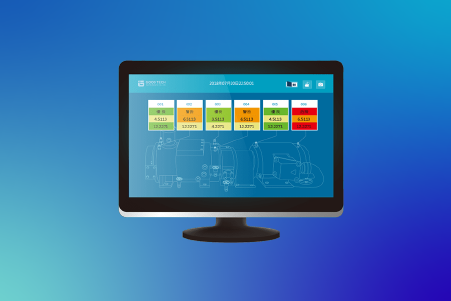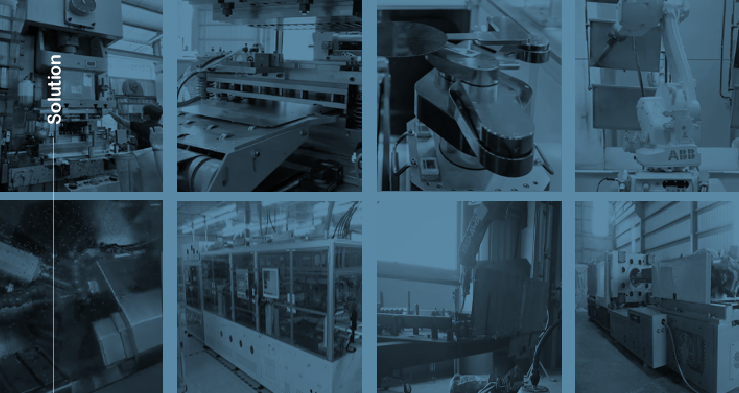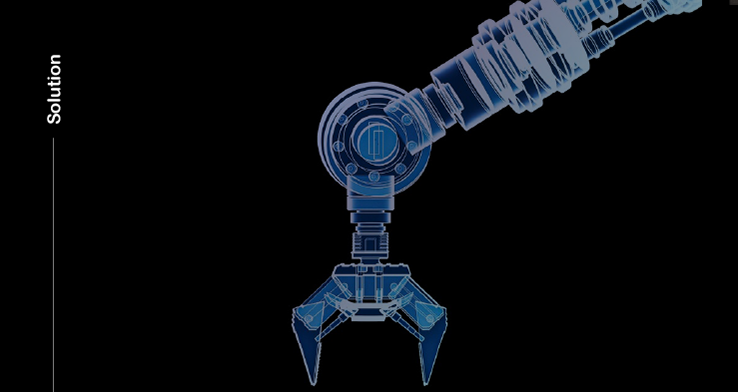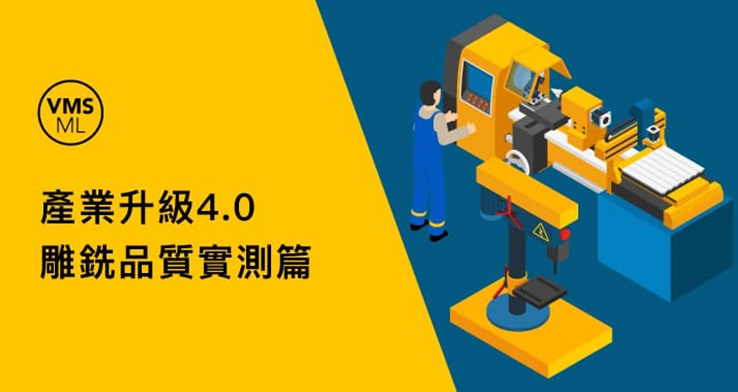Common Issues in Sub-Fab?
Application Field |Sub-FabThe Sub-Fab auxiliary manufacturing cleanroom is equipped with various types of Dry pump vacuum pumps. How can we effectively manage and monitor them to achieve predictive maintenance?
Implementation Motivation
Sub-Fab and Dry Pump
Sub-Fab refers to an auxiliary manufacturing cleanroom in the semiconductor industry. In semiconductor processing equipment, Dry pumps are often used to create a vacuum environment. For example, in etching technology, etching equipment is divided into wet etching (liquid) and dry etching (gas). To increase the precision of etching, the environment is controlled under low pressure and high-energy gas conditions, which requires the use of Dry pumps and Turbo pumps.
The quality of Dry pumps significantly affects the Sub-Fab, making a comprehensive monitoring solution essential. Dry pumps are utilized in various areas, including semiconductor crystal growth plants, semiconductor manufacturing, panel manufacturing, Sub-Fab vacuum systems, and vacuum systems in general manufacturing plants. Specific equipment where they are used includes crystal growth furnaces, LPCVD (Low-Pressure Chemical Vapor Deposition) furnace tubes, Ion Implanters, CVD Producers (Chemical Vapor Deposition), PVD Sputters (Physical Vapor Deposition), Dry Etch systems, and Slit Coaters.
How to Implement
How to Plan Monitoring for Sub-Fab Equipment?
Quality inspections apply to semiconductor crystal growth plants, semiconductor manufacturing, panel manufacturing, Sub-Fab vacuum systems, and vacuum systems in various manufacturing industries.
Dry Pumps That Affect the Sub-Fab
Crystal growth furnaces, LPCVD (Low-Pressure Chemical Vapor Deposition) furnace tubes, Ion Implanters, CVD Producers (Chemical Vapor Deposition), PVD Sputters (Physical Vapor Deposition), Dry Etch systems, and Slit Coaters.
Pain Point Execution
How Does the Dry Pump Impact Sub-Fab?
Occupational Safety Hazards in Sub-Fab
The semiconductor manufacturing industry is often troubled by occupational safety issues due to the extensive use of chemical substances in the production process. Various toxic gases are involved, such as:
AsH3 (Arsine), SiH4 (Silane), SiH2Cl2 (Dichlorosilane), Si2H6 (Disilane), SiHCl3 (Trichlorosilane), GeH4 (Germane), PH3 (Phosphine), NH3 (Ammonia). These gases pose immediate risks to both the environment and human health.
After these toxic chemical gases react within cleanroom equipment, they are transported via the Dry Pump vacuum system to the Local Scrubber for processing. However, if residual gases remain in the exhaust duct, chemical reactions may occur. In mild cases, this can lead to blockages or corrosion in the exhaust pipes, while in severe cases, it can result in leaks or even explosions.
Process Issues in Sub-Fab
In industrial and semiconductor manufacturing processes, certain techniques such as heat treatment, coating, drying, film deposition, metallurgy, etching, ashing, and photoresist removal rely on Dry Pumps to create a vacuum environment.
The vacuum system consists of multiple components, including pressure valves, pressure gauges, vacuum chambers, and pumps. The role of the Dry Pump is particularly crucial in processes like Dry Etching (Dry ETCH), where plasma is used to break down reactive gas molecules. Through either ion-driven chemical reactions or physical actions, the exposed thin film is etched away. The byproducts are then removed via the Dry Pump.
If the Dry Pump fails or malfunctions, it can lead to an increase in defective products during the manufacturing process, resulting in product contamination.

Ion implanter

Dry Etch

Slit Coater

CVD Producer

LPCVD Furnace Tube

Crystal Growth Furnace
Execution Goals
Ensuring Dry Pump Quality
#Understanding Equipment Quality to Prevent Unexpected Downtime
Dry pumps in Sub-Fab environments belong to the category of rotary machinery. By assessing rotor health and implementing predictive maintenance, issues such as powder clogging, oil degradation (leakage, deterioration) at the bearing end, and premature mechanical failure can be prevented, thereby avoiding unexpected downtime.
#Quickly Identifying Root Causes and Eliminating Abnormalities
Sub-Fab dry pumps come in various models and have a significant impact on the manufacturing process. When an issue arises, it is crucial to promptly identify the root cause and eliminate anomalies to prevent increased defect rates and higher production costs.
#Reducing Maintenance Costs While Maximizing Effectiveness
Due to the diversity of Sub-Fab dry pump models, many users rely on outsourcing or returning the equipment to the manufacturer for maintenance. However, the effectiveness of such maintenance is often unclear. By understanding dry pump quality, unnecessary servicing can be avoided, ensuring that maintenance is performed at the right time and reducing overall costs.
#Increasing the Usage Rate of Good Equipment and Preventing Premature Aging
Sub-Fab dry pumps play a crucial role in semiconductor manufacturing. Many users, however, lack insight into equipment quality and blindly send pumps back to the manufacturer for maintenance, often replacing unnecessary parts. A precise understanding of equipment quality ensures that resources are allocated wisely, reducing maintenance costs and preventing premature aging.

Prevent Unexpected Downtime

Identify Root Causes of Issues

Ensure Maintenance Effectiveness

Increase Good Product Usage Rate
Execution Method
Dry Pump Vibration Diagnosis
Many equipment systems rely on rotary machinery (e.g., various motors and pumps) as their primary power source. Therefore, the health of rotary equipment directly impacts the overall machine condition.
The VMS-DP Vacuum Pump Monitoring System is equipped with multiple ISO-certified rotor health assessment standards. Engineers and operators can use this functionality to evaluate the condition of each rotor, enhancing maintenance efficiency and predictive maintenance operations.
Depending on the type of machinery (horsepower classification, motor-to-load connection type, rotor type, rigid or flexible structure), the system uses the specified frequency bandwidth, filtering out certain frequency components within that range. As needed, the vibration physical quantity's amplitude can be displayed in 0-Peak, Peak to Peak, or RMS values.
The system provides quality inspections for various DryPumps within the facility, visualizing data to present it in the clearest and simplest way for users. With the trend graph feature, maintenance personnel can predict and schedule maintenance at the right time, quickly identifying equipment issues and reducing maintenance costs.
Support
Other Equipment-Related Issues












